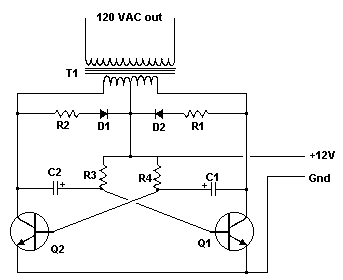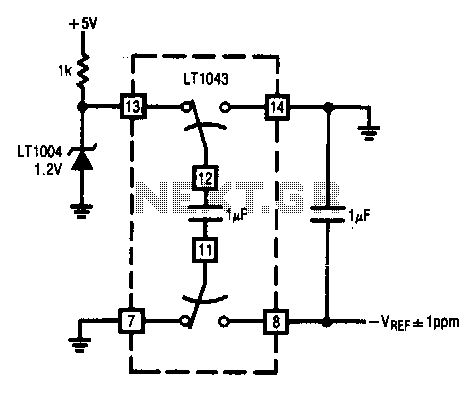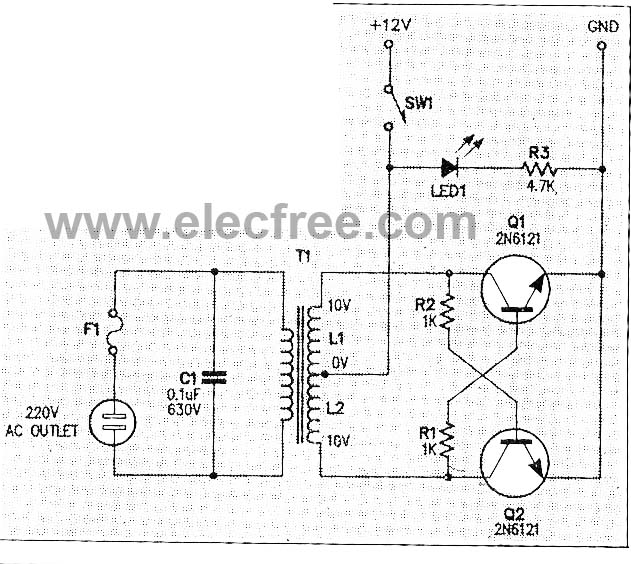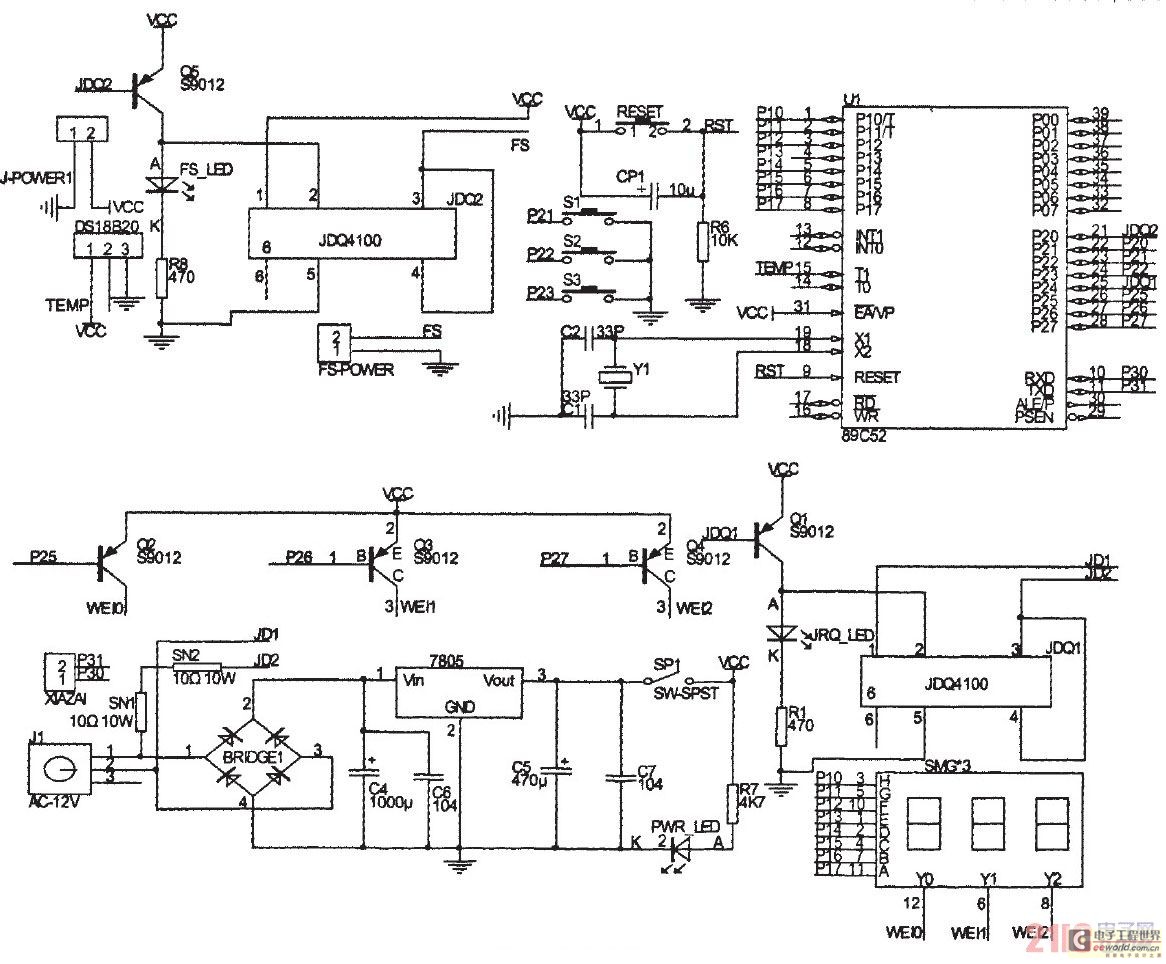
the photovoltaic sine wave inverter introduction to 68HC908MR16 one-chip computer
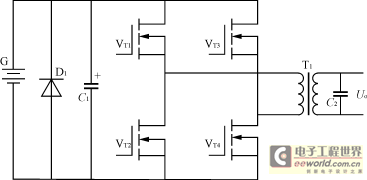
With the increasing awareness of environmental issues and the energy crisis, the development and utilization of new energy sources have garnered more attention. Solar energy has recently become popular due to its inexhaustible, efficient, and pollution-free characteristics. The photovoltaic power supply system introduced in this text is designed for residential use, particularly suitable for areas with limited access to electricity, such as remote regions in western China. The market potential for this system is expected to grow as the development of these western regions continues. The basic structure of the system is depicted in Fig. 1. Initially, the solar cell array charges an accumulator via a charging circuit, providing stable direct current voltage. This direct current is then inverted to high-frequency alternating current through an inverter circuit, which is subsequently filtered and transformed to produce a 50Hz, 220V sine wave output. The overall system control is managed by the MR16 microcontroller, which samples, forms, and provides feedback for the digital PI controller, responsible for generating the SPWM wave and the alternating current voltage output. The 68HC908MR16 microcontroller is a low-cost, high-performance 8-bit device with 32KB of flash memory and 768 bytes of RAM, sufficient for this application. The system employs a specialized PWM module, No. 6, for motor control, capable of handling both single-phase and three-phase outputs. This module includes a fault protection pin to quickly disable the PWM output in case of a fault. The system can utilize an external clock or an internal phase-locked loop clock, which can generate an 8MHz frequency for precise timing. It also features programmable AD clocks with a maximum conversion time of 2 seconds, minimizing interrupt program execution time. The SCI serial communication interface supports full duplex or half duplex modes, enabling reliable communication with external devices. The main circuit of the system utilizes a single-phase full-bridge inverter, as shown in Fig. 2. The switching elements are power MOSFETs, selected for their suitability for low-power applications, fast switching capabilities, and high operational frequency. The grid driving signal for the switching elements is derived from the SPWM wave generated by the MR16 microcontroller. The output from the full-bridge inverter is a high-frequency SPWM wave, which is then transformed to produce a standard sine wave output of 220V, 50Hz. The 68HC908MR16 microcontroller is specifically designed for motor control, operating in complementary mode or independently with six PWM outputs. Initialization sets the system to operate in complementary mode, ensuring that the same bridge arm is active. A counter value is written during initialization to determine the carrier frequency for switching. The real-time pulse width of the PWM wave is calculated by the interrupt program, with the counter in the PWMMC module counting to the specified value for operation.
The photovoltaic power supply system described is an innovative solution tailored for residential applications in remote areas, where access to conventional electricity is limited. The integration of solar energy harnessing technologies provides a sustainable alternative that aligns with global efforts to address energy shortages and environmental concerns. The system's architecture emphasizes a modular design, allowing for scalability and adaptability to various energy demands. The use of advanced microcontroller technology enables precise control over the energy conversion process, ensuring efficiency and reliability in power delivery.
The inverter circuit's design, employing a full-bridge configuration, enhances the system's capability to produce high-quality sine wave outputs, essential for compatibility with standard electrical appliances. The choice of power MOSFETs as switching elements is critical, as they offer low on-resistance and fast switching speeds, contributing to the overall efficiency of the inverter operation. The inclusion of fault protection mechanisms within the PWM module ensures a high level of safety and operational integrity, allowing for immediate response to electrical faults, thereby protecting both the system and connected devices.
Furthermore, the communication interface capabilities of the system facilitate easy integration with external monitoring and control systems, providing users with real-time feedback on energy production and consumption. This feature is particularly beneficial for remote users, enabling them to optimize their energy usage and maintain system performance. Overall, this photovoltaic power supply system represents a significant advancement in renewable energy technology, addressing both practical energy needs and environmental sustainability goals.With the aggravation and improvement of human environmental consciousness day by day of the energy crisis, the development and utilization of new energy is paid attention to more and more by people. And the solar energy has been favored by people recently as the inexhaustible high-efficient and pollution-free energy.
The photovoltaic sine inverse power supply system that this text introduces is exactly a for suitable for the familying, a kind of power system especially suitable for the few electric western users of outlying district of electroless, its market prospect will be broader and broader with the proceeding of development of western regions of China. The basic structured flowchart of system is shown as in Fig. 1. Pursued knowingly, the solar cell array passes the charging circuit to the accumulator charge at first, thus get a basic stable direct-current volts, and then invert the direct current the high-frequency alternating current through the inverter circuit, filtered by voltage transformer boost and smoothing circuit of mains frequency finally and turned into the alternating current voltage of 50Hz, 220V sine.
The control of the overall system was finished by MR16 one-chip computer. Its key part samples and forms and feedbacks the constituent digital PI controller part for the forming of SPWM wave and alternating current voltage of the foundation output. 68HC908MR16 one-chip computer is a low-cost, high-performance eight-bit one-chip computer. It have the intersection of 32k and byte can wipe flash memory FLASH, RAM with 768 bytes on-chip that write, totally enough to this system; PWMMC module that a special PWM of No.
6 used for electric machine control exported, are suitable for single-phase, three phases to reverse, this module has special No. FAULT pin 4 used for error protection at the same time, can blockade PWM and export and achieve the goal of protecting fast on condition that cause and cut off when the trouble take place; Can choose the outside Jingzhen clock or clock generator module of the internal phase locked loop clock, the internal phase locked loop clock of this system selection can produce the frequency of internal bus of rigorous 8MHz, thus the frequency accuracy of the security system; Have programming AD clocks, AD change-over time only needs 2 s most quickly, can reduce the running time of the interrupt program to the greatest extent; Have SCI serial communication interfaces, can work in the full duplex or half duplex mode, can finish the serial communication with the external keyboard monitor system in this system reliably.
The systematic main circuit adopts the inverter circuit of single-phase full-bridge to be shown as in Fig. 2. Switching element adopt suitable for low-powered device, have the intersection of switch and fast, the intersection of operating frequency and higher characteristic power MOSFET among them.
The grid driving signal of the gas switching tube comes from the signal after driving circuit of SPWM wave that MR16 one-chip computer produced. The output reversed in full-bridge is a high-frequency SPWM wave, and strain the wave rear through the voltage transformer boost to get the alternating current voltage of standard sine of 220V, 50Hz.
68HC908MR16 one-chip computer have one use for electric machine control specially but on 3 to complementary mode or independently modal to include 6 No. PWMMC module that PWM exported work. Initialisation make it work until 3 complementary in signal to complementary mode namely the same bridge arm in system this, write a counter value in initialisation to PMOD H:L China, in order to determine the carrier frequency is the switching frequency.
The real-time pulse width of PWM wave is calculated and finished by the interrupt program, PCTN H:L in PWMMC module each time The counter counts to PMOD H:L Cause and cut off at the time of the value of China. Make degree of the intersectio 🔗 External reference
The photovoltaic power supply system described is an innovative solution tailored for residential applications in remote areas, where access to conventional electricity is limited. The integration of solar energy harnessing technologies provides a sustainable alternative that aligns with global efforts to address energy shortages and environmental concerns. The system's architecture emphasizes a modular design, allowing for scalability and adaptability to various energy demands. The use of advanced microcontroller technology enables precise control over the energy conversion process, ensuring efficiency and reliability in power delivery.
The inverter circuit's design, employing a full-bridge configuration, enhances the system's capability to produce high-quality sine wave outputs, essential for compatibility with standard electrical appliances. The choice of power MOSFETs as switching elements is critical, as they offer low on-resistance and fast switching speeds, contributing to the overall efficiency of the inverter operation. The inclusion of fault protection mechanisms within the PWM module ensures a high level of safety and operational integrity, allowing for immediate response to electrical faults, thereby protecting both the system and connected devices.
Furthermore, the communication interface capabilities of the system facilitate easy integration with external monitoring and control systems, providing users with real-time feedback on energy production and consumption. This feature is particularly beneficial for remote users, enabling them to optimize their energy usage and maintain system performance. Overall, this photovoltaic power supply system represents a significant advancement in renewable energy technology, addressing both practical energy needs and environmental sustainability goals.With the aggravation and improvement of human environmental consciousness day by day of the energy crisis, the development and utilization of new energy is paid attention to more and more by people. And the solar energy has been favored by people recently as the inexhaustible high-efficient and pollution-free energy.
The photovoltaic sine inverse power supply system that this text introduces is exactly a for suitable for the familying, a kind of power system especially suitable for the few electric western users of outlying district of electroless, its market prospect will be broader and broader with the proceeding of development of western regions of China. The basic structured flowchart of system is shown as in Fig. 1. Pursued knowingly, the solar cell array passes the charging circuit to the accumulator charge at first, thus get a basic stable direct-current volts, and then invert the direct current the high-frequency alternating current through the inverter circuit, filtered by voltage transformer boost and smoothing circuit of mains frequency finally and turned into the alternating current voltage of 50Hz, 220V sine.
The control of the overall system was finished by MR16 one-chip computer. Its key part samples and forms and feedbacks the constituent digital PI controller part for the forming of SPWM wave and alternating current voltage of the foundation output. 68HC908MR16 one-chip computer is a low-cost, high-performance eight-bit one-chip computer. It have the intersection of 32k and byte can wipe flash memory FLASH, RAM with 768 bytes on-chip that write, totally enough to this system; PWMMC module that a special PWM of No.
6 used for electric machine control exported, are suitable for single-phase, three phases to reverse, this module has special No. FAULT pin 4 used for error protection at the same time, can blockade PWM and export and achieve the goal of protecting fast on condition that cause and cut off when the trouble take place; Can choose the outside Jingzhen clock or clock generator module of the internal phase locked loop clock, the internal phase locked loop clock of this system selection can produce the frequency of internal bus of rigorous 8MHz, thus the frequency accuracy of the security system; Have programming AD clocks, AD change-over time only needs 2 s most quickly, can reduce the running time of the interrupt program to the greatest extent; Have SCI serial communication interfaces, can work in the full duplex or half duplex mode, can finish the serial communication with the external keyboard monitor system in this system reliably.
The systematic main circuit adopts the inverter circuit of single-phase full-bridge to be shown as in Fig. 2. Switching element adopt suitable for low-powered device, have the intersection of switch and fast, the intersection of operating frequency and higher characteristic power MOSFET among them.
The grid driving signal of the gas switching tube comes from the signal after driving circuit of SPWM wave that MR16 one-chip computer produced. The output reversed in full-bridge is a high-frequency SPWM wave, and strain the wave rear through the voltage transformer boost to get the alternating current voltage of standard sine of 220V, 50Hz.
68HC908MR16 one-chip computer have one use for electric machine control specially but on 3 to complementary mode or independently modal to include 6 No. PWMMC module that PWM exported work. Initialisation make it work until 3 complementary in signal to complementary mode namely the same bridge arm in system this, write a counter value in initialisation to PMOD H:L China, in order to determine the carrier frequency is the switching frequency.
The real-time pulse width of PWM wave is calculated and finished by the interrupt program, PCTN H:L in PWMMC module each time The counter counts to PMOD H:L Cause and cut off at the time of the value of China. Make degree of the intersectio 🔗 External reference
